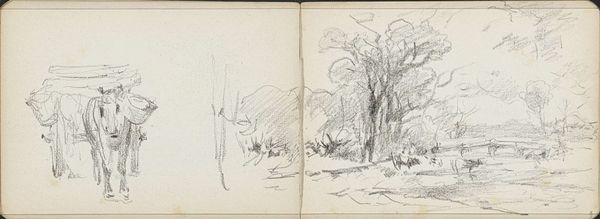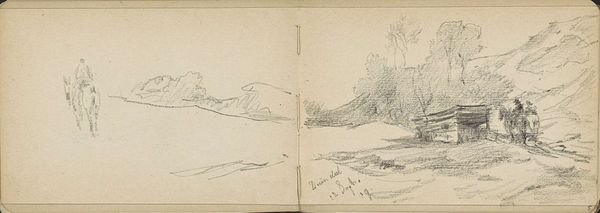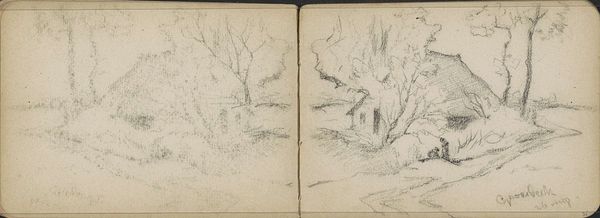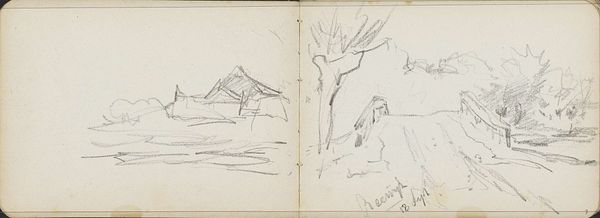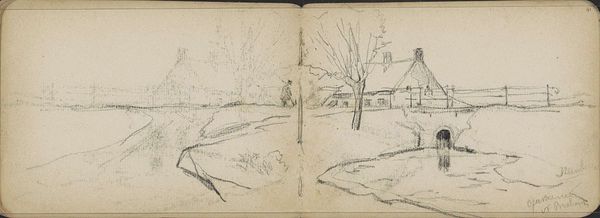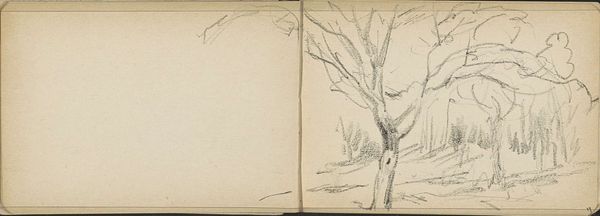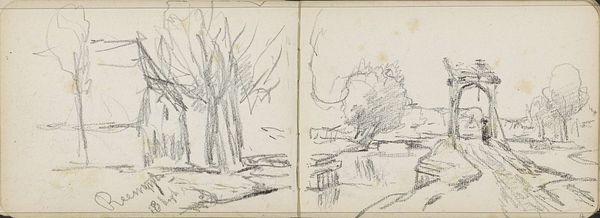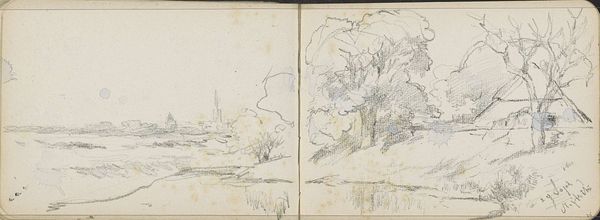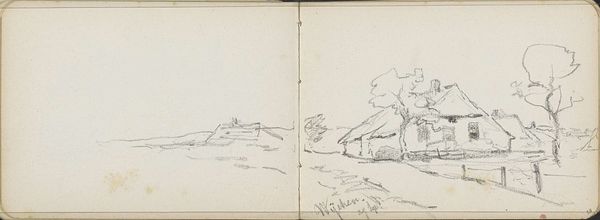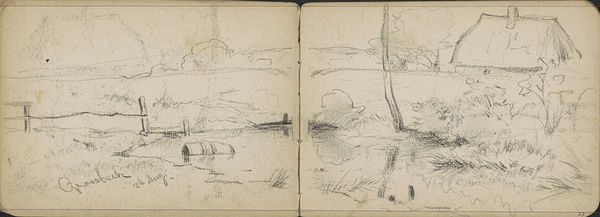
Dimensions: height 113 mm, width 159 mm
Copyright: Rijks Museum: Open Domain
Curator: Willem Cornelis Rip's "Landschap met huizen te Deurne," likely created between 1896 and 1897, captures a scene in Deurne using delicate pencil strokes. Editor: It’s faint, almost like a half-remembered dream. See how lightly the houses are rendered, dwarfed by those looming trees? Curator: Absolutely, there’s an ethereal quality, which, paradoxically, is also very grounded. Consider Rip's process: pencil on paper. These weren't luxury materials; this suggests a quick, almost urgent desire to record the landscape. Editor: The accessibility of pencil certainly democratized art-making, but I’m also seeing an artist consciously choosing to highlight process and immediacy. There's labor present in each mark. Were these meant to be preparatory sketches, studies of form? Curator: Quite possibly, yes. They exemplify Impressionist leanings mixed with a realist drive to capture an immediate sense of place. Look closely—there is a house. Can you make it out? Barely. Editor: Barely indeed. The lines seem provisional, unsure. What's so poignant is the contrast. Fragile human dwellings nestled into that chaotic abundance. Nature seems to reclaim even these traces of man. Curator: The scene does suggest a transient moment, yes, even though this village of Deurne existed and exists still! It has a touch of melancholic observation. I wonder, too, about the paper itself. The support is integral, part of what holds the marks in tension, right? Editor: Exactly. And a mass-produced paper of this era speaks volumes about shifting industrial contexts impacting the accessibility of materials, hence affecting what and how artists choose to represent and reflect. Curator: What resonates with me is the simplicity—the artist's direct gaze, the ephemeral quality captured with minimal means. We see what the artist saw—we were standing behind him with a similar perspective, looking on as one fleeting instant dissolved. Editor: I see more than just what he saw: the invisible network of labor and resources, the industrial underpinnings of 19th-century image making, all converging here. A landscape sketched—but made by so many hands.
Comments
No comments
Be the first to comment and join the conversation on the ultimate creative platform.
